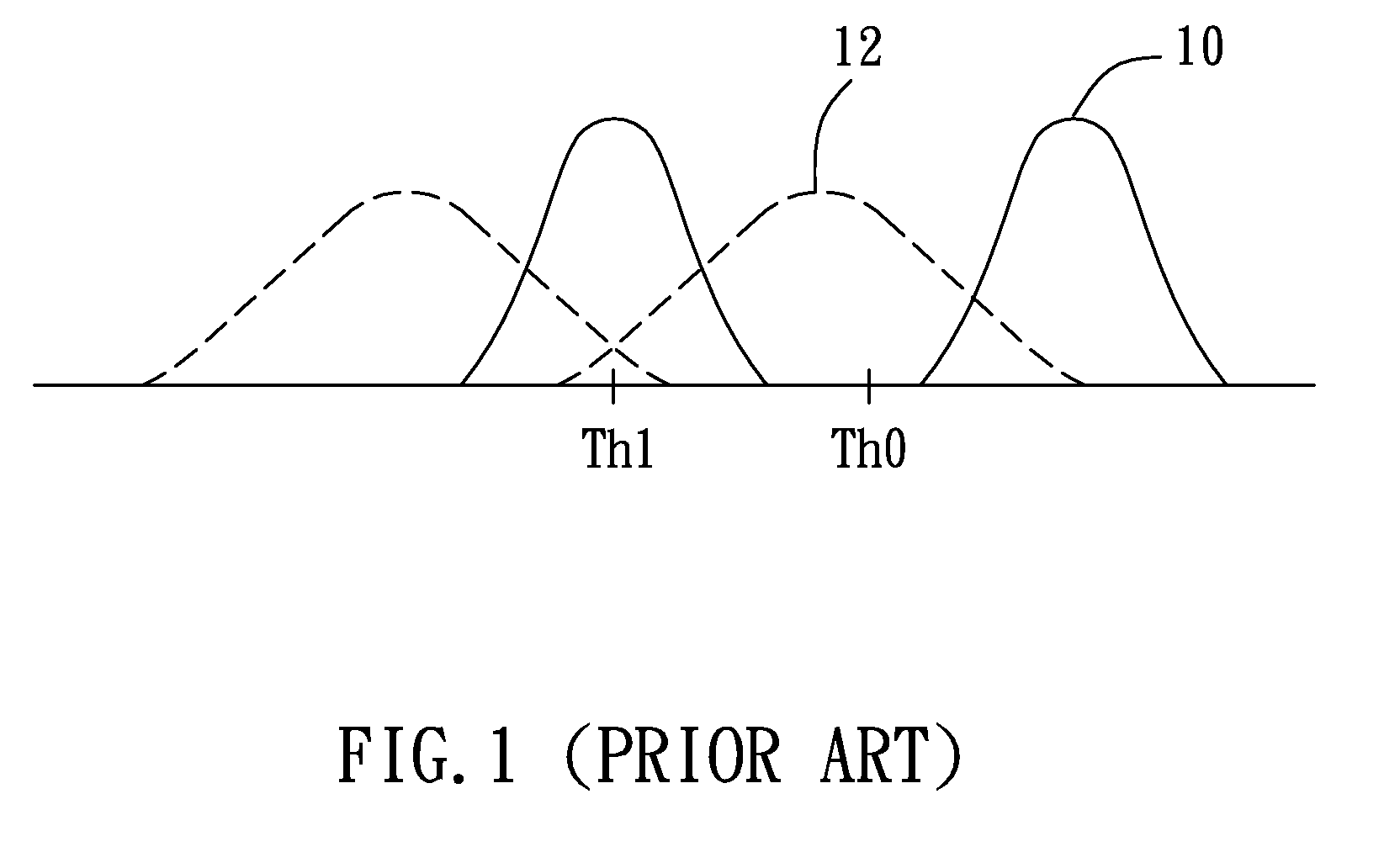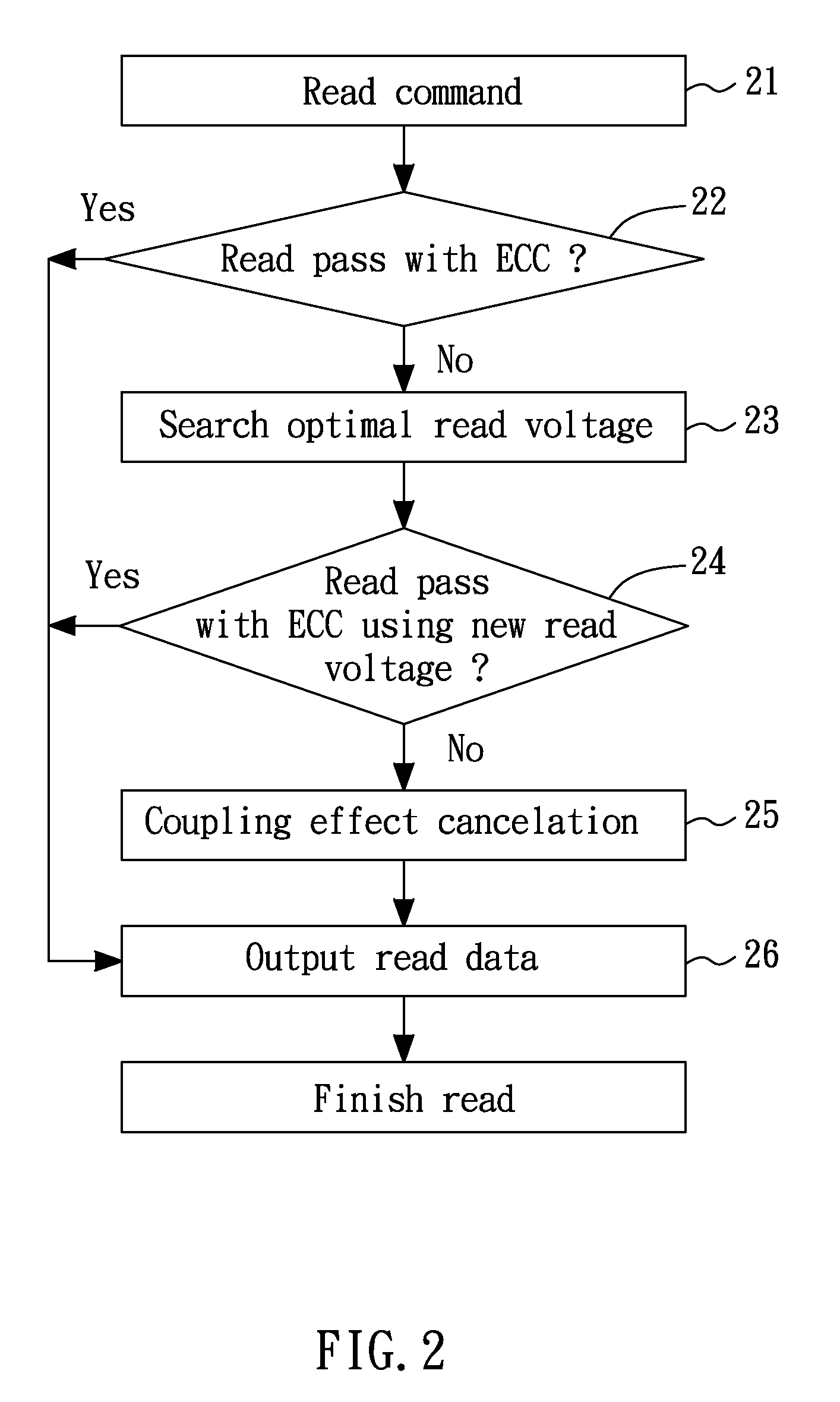Method Of Reducing Bit Error Rate For A Flash Memory
a flash memory and bit error rate technology, applied in the field of flash memory, can solve the problems of error bits, error correction control (ecc) may not be able to correct error bits, threshold voltage distribution may shift, etc., and achieve the effect of reducing the coupling
- Summary
- Abstract
- Description
- Claims
- Application Information
AI Technical Summary
Benefits of technology
Problems solved by technology
Method used
Image
Examples
Embodiment Construction
[0016]FIG. 2 is a flow diagram that illustrates a read flow of a flash memory according to one embodiment of the present invention. The embodiment may be adapted to a multi-level cell (MLC) flash memory as well as a single-level cell (SLC) flash memory.
[0017]Referring to FIG. 2, after the flash memory is requested by a read command (the step 21), the read data are checked for the compliance with error correction control (ECC) in the step 22. If the reading passes the ECC check, the read data are outputted (the step 26); otherwise, an optimal read voltage is searched in the step 23, followed by re-reading the flash memory using the newly searched read voltage to replace a default read voltage. This newly searched read voltage may be used to resolve the problem caused by distribution shift. The step 23 may be implemented by, but not limited to, methods disclosed, by the same assignee, in another U.S. patent application entitled “METHOD AND SYSTEM OF FINDING A READ VOLTAGE FOR A FLASH ...
PUM
 Login to View More
Login to View More Abstract
Description
Claims
Application Information
 Login to View More
Login to View More - R&D
- Intellectual Property
- Life Sciences
- Materials
- Tech Scout
- Unparalleled Data Quality
- Higher Quality Content
- 60% Fewer Hallucinations
Browse by: Latest US Patents, China's latest patents, Technical Efficacy Thesaurus, Application Domain, Technology Topic, Popular Technical Reports.
© 2025 PatSnap. All rights reserved.Legal|Privacy policy|Modern Slavery Act Transparency Statement|Sitemap|About US| Contact US: help@patsnap.com



